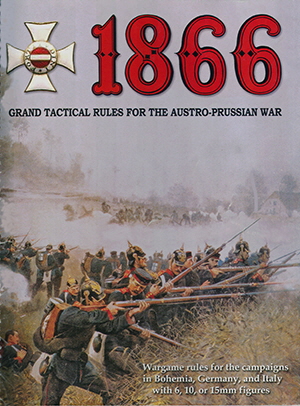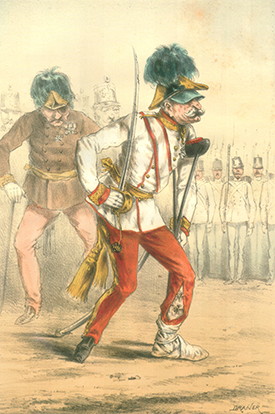
 No matter how well proofed, it seems, there’s always a few goofs, omissions, or clarifications that need to be addressed in any product as detailed as 1866. Here’s a few that have come up; I’ll try to address and post others that alert readers may bring to my attention on this site as they come up.
No matter how well proofed, it seems, there’s always a few goofs, omissions, or clarifications that need to be addressed in any product as detailed as 1866. Here’s a few that have come up; I’ll try to address and post others that alert readers may bring to my attention on this site as they come up.
- In the quarter-scale section on page 31, please disregard the first sentence of the Distances paragraph, which was obviously crafted under the influence of too little sleep. It should read:
All movement distances remain the same as the full-scale and half-scale variants when the ground scale and turn length is halved, but the fire ranges are double those listed on the Cheat Sheet. - Concerning Artillery usage. It was common practice during this era to group two, three, or four batteries on the battlefield whenever possible (without regard for unit affiliation) into ad hoc “battalions”. Each of these artillery groups/battalions would engage common targets under the direction of the senior artillerist present. The Artillery Tables in all the Grand Tactical Rules games were calibrated to give the most accurate results when two or three grouped batteries engage the same target simultaneously, i.e., with one die roll. This I tried to encourage in the rules by subjecting lone batteries to severe morale penalties. At the same time, the Artillery Table compensates individual batteries somewhat by inflating their chances of inflicting damage on a target for playability’s sake …but as “single stand units” there is a big penalty to pay for operating independently. The individual batteries lose Morale Points three times as fast as multiple-stand “battalions”.
- The rule should be, therefore, that if two or three batteries are grouped together to gain the “battalion” morale benefit, they must all engage the same target as well, massing their points and firing on it with a single die roll.
 Continuing play of the Grand Tactical rules resulted in the appearance, in 2017, of a completely revised fast-play version of the rules. These are compatible with (but much faster than) the original 1866 rules, and I regard these to be the definitive version of the series. New quick reference sheets (and a summary of changes) for 1859 and 1866 are available here.
Continuing play of the Grand Tactical rules resulted in the appearance, in 2017, of a completely revised fast-play version of the rules. These are compatible with (but much faster than) the original 1866 rules, and I regard these to be the definitive version of the series. New quick reference sheets (and a summary of changes) for 1859 and 1866 are available here.

